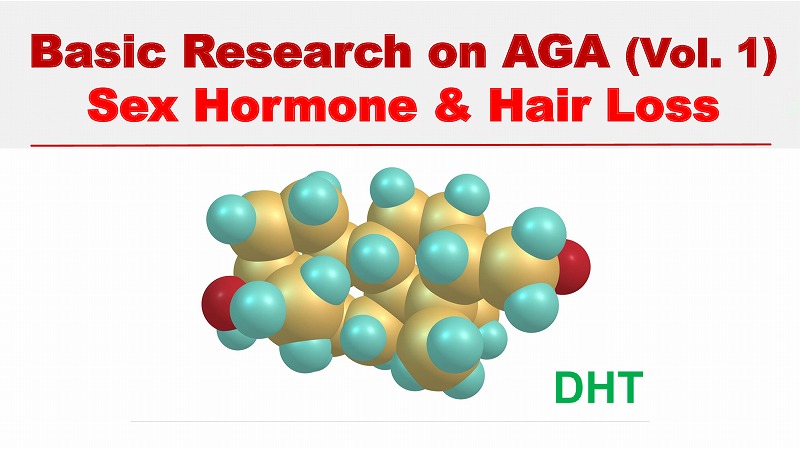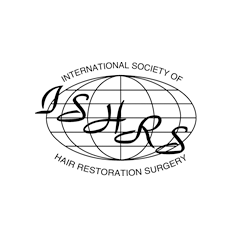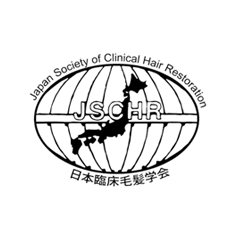Relative Potency and Receptor Affinity of Major Androgens

The action of androgens in the target tissue is determined by the relative potency of the molecular structure and binding affinity for androgen receptors.
Relative potency and receptor affinity of the major androgens are as follows:
DHEA < androstenedione < testosterone < DHT
The 19-carbon androgen structure requires a 17-OH group to bind to the androgen receptor.
Among the many types of androgens, DHT is the most potent endogenous androgen.
The enzyme 5α-reductase is required within the tissues to convert testosterone to DHT.
Target tissues of androgens, such as the skin, prostate and liver, contain 5α-reductase in the cells.
Local intracellular DHT in hair follicular cells is produced from circulating androgenetic precursors such as dehydroepiandrosterone (DHEA), androstenedione and testosterone.
DHT binds to androgen receptors and acts locally within the target tissue.
It is a local mechanism that amplifies intracellular androgenetic effects. This local synthesis of DHT is considered to be important in the clinical practice of AGA.
DHT is also found in the blood. DHT circulating in the blood is produced and supplied probably from the liver.
Although both locally produced DHT and circulating serum DHT may play an important role in androgenetic alopecia, it is believed that the main effect of DHT is dure to local synthesis.
Androgens & Body Hair Thickness
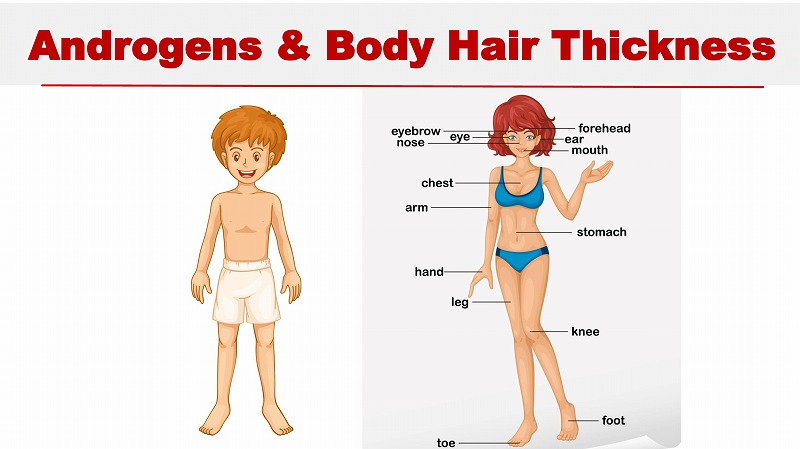
Androgens are the main cause of scalp hair loss in patients with androgenetic alopecia.
In the meanwhile, the same hormones increase the thickness of the chest hair, axillary hair, pubic hair and beard.
The clinical effect of androgens varies in different places on the body. The effect of androgens on the body hair is not always the same.
Low levels of androgens can cause axillary hair and pubic hair to grow in women.
However, high levels of androgens are necessary to grow body hair, limb hair, pubic hair and beard in men.
The sensitivity of androgen receptors differs between men and women.
The serum levels of androgens are usually not high in the early stages of male pattern baldness after the adolescence.
Androgen levels are not directly correlated with the early progression of androgenetic alopecia (AGA).
What are the causes of individual differences in hair loss in AGA?
Sensitivity of androgen receptors and DHT play an important role in the progression of AGA in men and women.
In addition to serum levels of androgens, other factors such as sensitivity to androgen receptors, 5α-reductase, and dihydrotestosterone (DHT) are also involved in the typical symptoms of male pattern baldness, such as vertex alopecia, recession of front-temporal triangles, and receding frontal hairline.
Binding Affinity of Steroid Hormones to Androgen Receptor
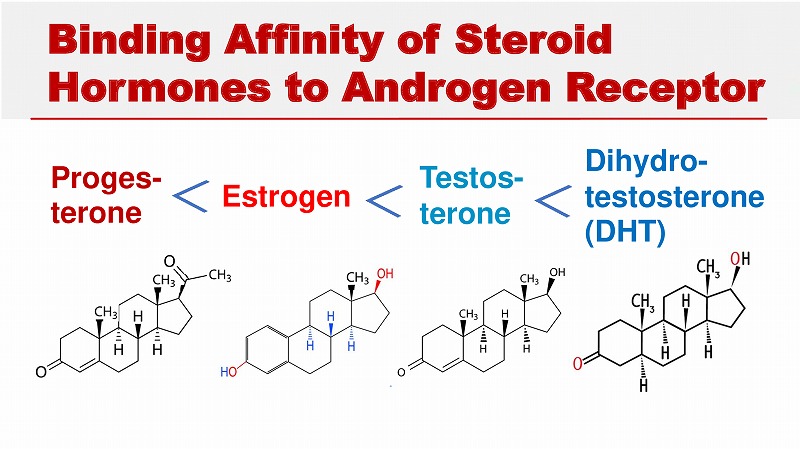
Sex hormones are synthesized from cholesterol by the steroid pathway in men and women.
Circulating androgenic precursors diffuse across the plasma membrane and enter hair follicular cells from the blood.
They are modified to dihydrotestosterone (DHT) within the hair follicular cells.
DHT is the most potent intracellular androgen.
DHT is produced in the follicular cells and binds to androgen receptors in the nucleus of dermal sheath cells in the androgen-targeted areas.
The androgen receptor is X-linked to the long arm of the X chromosome.
The binding affinities of various steroid hormones to the androgen receptors are as follows:
Progesterone < estrogen < testosterone < DHT. Testosterone and DHT bind to the same receptor, but they play different physiological roles. Symptom of female AGA can also develop irrelevant of androgen receptors in certain patients.
